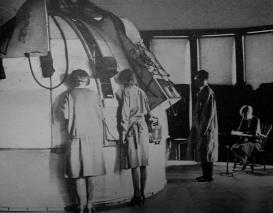This book project hopes to bring some insight into the modern quest for the normal. The question of "What is normal?" – or rather how do we come to think of what we conceive to be normal – is the vantage point for a historical deconstruction of normality.
A major influence on the conception of the normal has been the invention of the "normal child" through the introduction of scientifically measured norms of child development into baby’s daily life. Today those norms, often described as "milestones," are ubiquitous on a global scale.
Developmental norms for assessing whether a child is developing "normally" have been subject to critique since their inception. While, for some critics, they were not standardized and precise enough, for others, they epitomized normative regulation and normalization. However, even today, they provide benchmarks for parents, teachers, doctors, and psychologists to judge the development of babies and children. Developmental norms shape pervasive ideas about what holds for a normal child, and about what holds for normal behavior at all. So how and why did this contested knowledge about normal development emerge? Who invented the normal child? In my dissertation project (completed in 2023), I traced the formation of these developmental norms and followed normality’s development through a scientific research program that began, ironically, with a critique of that very conception of the normal.
After World War I, a group of child development researchers and filmmakers around Yale psychologist, pediatrician, and educator Arnold Gesell innovated techniques of photography and film in order to collect visual data on the mental development of babies. Although the researchers sought, by means of visual technologies, to challenge standardized measurements of the normal, they nonetheless created a set of norms. These norms—also known as developmental milestones—became a worldwide standard for assessing a child’s normality and shaped a universal understanding of what constituted the normal child. Ultimately, Gesell’s far-reaching theory of normal development contributed to the very idea of the normal that he had critiqued in the first place.
Based on archival sources from the photographic research program at Yale, the book project returns to the scientific and political foundation of this knowledge of the normal. By tracing the mechanism of visual data and media production behind the making of Gesell's developmental norms, I show that, through the utilization of film and photography, a novel notion of the normal emerged that spread in the form of a norm of normal development. Focusing on the material factors of visual technology, my history of developmental psychology links the scientific laboratory with private households and public life. Doing so sheds light on knowledge that was often taken for granted because the visual constitution of child development seemed natural and inevitable. My research reveals the relation between scientific theory, visual data practices, and highly popularized knowledge, and thus adds to the historical understanding of the twentieth-century notion of normality. In so doing, it also helps to deconstruct what had come to be thought of as human nature.

